The Bahamas is a stunningly gorgeous place, made up of nearly 700 turquoise-rimmed islands stretching across 500 miles of the Atlantic Ocean. The beaches are perfect, the colonial architecture impressive, so it’s no surprise that Nassau, on the island of New Providence, is a hub for cruise ships. Juxtaposed with that beauty, however, is a sometimes ugly history. Christopher Columbus landed in the Bahamas in 1492—and subsequently enslaved the indigenous population. Nassau was a stronghold for pirates and then the British Empire, which built up its regional power with slave labor. But after slavery was fully abolished in 1838, the Bahamas became a haven for Black men and women. Today, 85 percent of the population is of African descent—which helps explain the rich cultural legacy. The Bahamas gained independence from the U.K. in 1973, and while many visitors now think of it as a subtropical vacation spot, you don’t have to look hard to see that the picture postcard is actually quite complex. If you’re willing to pause, that complexity is what makes it special.
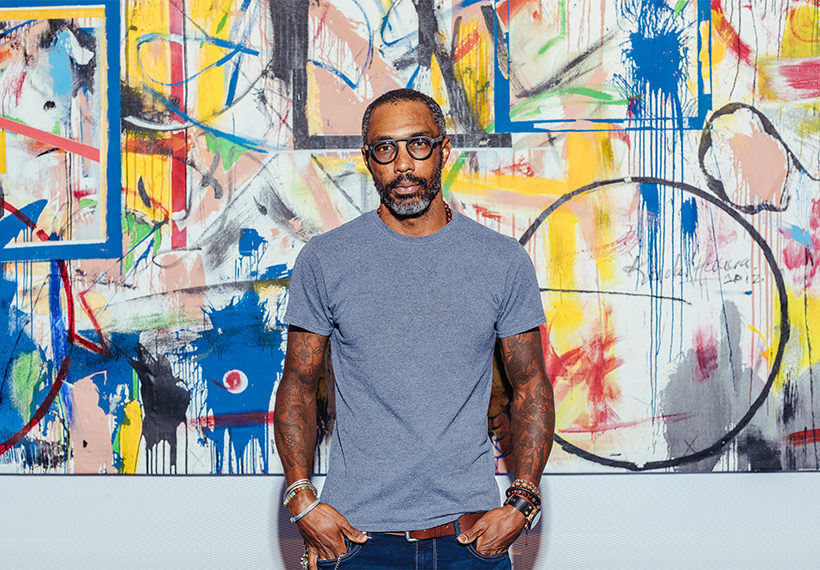
Day 1
Bahamian art, fantastic conch fritters, and a family fishing trip
One way to get to know a place is through its art. So why am I starting my day at the enormous Baha Mar resort, just west of the Bahamian capital of Nassau, instead of at a museum? Because John Cox, the resort’s director of art and culture, has lined the property’s hallways, lobbies, and restaurants with more than 2,500 Bahamian works. Before I even see a beach, Cox wants me to grapple with the art his people have created.
Lanky and tattooed, clad in a black tee and jeans, Cox looks as if he could hold court at a café on New York’s Lower East Side. He grew up on this island, attended the Rhode Island School of Design, then returned to work as an artist and the chief curator at the National Art Gallery of The Bahamas. As we trek past the casino and palm-lined pools, I mention that resorts can sometimes isolate travelers from a location. He grins a bit. “My team’s vision is to jump into the belly of the dragon and see if we can affect the digestion,” he says. “So many people come here—can we create an intersection of authentic Bahamian culture with the massive amounts of people?”
We turn a corner, and I’m confronted by Kendal Hanna’s The Shock of Kingdom Come, a grand canvas of emotions—some hard and geometric, some splashy. Cox explains that the artist, now 85 years old, was a student of the Abstract Expressionists and one of the first local artists to rebel against conventional landscape work. Another wall holds the vibrant Celebration: Spirit of Junkanoo by Brent Malone. The work is a dreamscape of superhero-ish Bahamians performing at Junkanoo, a twice-yearly festival with music, dancing, and resplendent costumes. Many believe the tradition began when the enslaved people of the islands were given free time around Christmas and created celebrations infused with African customs.
I ask to see one of Cox’s own works, and he shows me Aunt Ethel Meeting the Kennedy’s III. It seems simple at first—two big circles side by side—but like these islands, it’s much more layered. The circles are made of repeated prints of a grinning Ethel Kennedy wearing a pearl necklace, and “Aunt Ethel,” a salt-of-the-earth Bahamian woman whom Cox sees as “everybody’s Aunt Ethel.” “If you go to places like Harbour Island,” he says, “there’s incredible wealth mixed in with the grassroots communities. This is kind of that melee.”
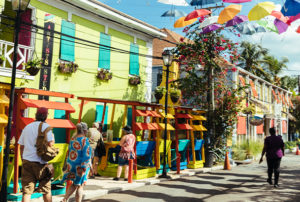
We hop in Cox’s car for a 10-minute drive into historic downtown Nassau. Colorful colonial architecture abounds, some buildings crumbling, some refurbished. We pull up to a stately Neoclassical manse, the National Art Gallery of The Bahamas, which was the home of a colonial chief justice in the late 1800s. Inside, there’s an entire room in which painter Lynn Parotti warps lush coral, mangrove, and water imagery into something not quite abstract. I feel as if I’m surrounded by aquatic life, but seen through the eyes of… I don’t know, a drunken seahorse? I’m also taken by the work of folk artist Amos Ferguson, a house painter who used leftover paint for his canvases. Angel depicts a Black woman with polka-dotted angel wings and a pink polka-dot dress playing a conch shell that’s pink on the inside. I wonder if I’ve seen that shade of pink on houses around town.
We’re off again, but I’m not quite sure where to. Suddenly, Cox pulls into a dirt driveway, hops out laughing, and runs over to give Antonius Roberts a big hug. “This is Hillside House,” Roberts, himself an artist, says with a rather courtly air. There’s an outdoor bar under a vast tree and an old building containing his studio. “I consider it an intervention,” he adds, meaning a counter to the big global brands that cater to cruise ship passengers down on Bay Street. His art, which dots the property, is rooted—literally—in the brutal history of British colonialism: He has created sculptures of enslaved ancestors from the trunks of living trees. Yet, when he shows me a medal awarded him by Queen Elizabeth, the Order of the British Empire, he’s undeniably proud—another layer of complexity.
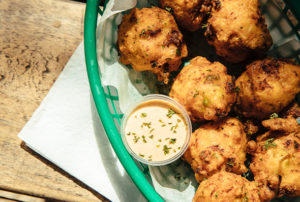
He’s also proud of his kitchen’s conch fritters, declaring them “the best in town!” They have a perfect outer crunch but are soft inside, with plenty of conch and a sneaky kick from local goat peppers. I wash them down with a grown-up version of a Bahama Mama. A breeze pushes through the yard. The leaves rattle, the fritters kick up the heat, and the drink brings it down. I find myself pleasantly balanced in the middle.
Cox drops me off at Rosewood Baha Mar, where I pick up my wife, Luisa, and 2-year old son, Joaquin. We’re scheduled to meet Captain Steve Rolle of 3 Queens Charters down at the docks for some fishing, and soon we’re pitching and rolling over swells and trolling for wahoo, one of the fastest—and most delicious—types of fish around. My son’s stomach has other plans, however. Just before he turns green, Captain Rolle, who’s been guiding on these waters for decades, offers a solution.
He finds calm water on the lee side of the island and we cast chunks of squid along a shallow reef. I immediately feel little tugs and nibbles, then something angry takes my bait. Soon we see the fish on the surface, a feisty little strawberry grouper with a polka-dot pattern not unlike the dress in that Amos Ferguson painting. For the next few hours, Luisa and I reel in more groupers and colorful triggerfish. She lands the biggest one, exclaiming, “Ha! I’m winning,” with more gusto than I would have expected. Joaquin gets his sea legs enough to fight a few as well.
Back on land, we clean up and head to dinner at famed chef Daniel Boulud’s Café Boulud The Bahamas. Serge Gainsbourg and Jane Birkin whisper, “Je t’aime… moi non plus” in the background, and Luisa and I work through the tasting menu: hamachi and watermelon sitting on a thin layer of citrus jelly that makes it all pop; a fresh vichyssoise with shrimp and a salty burst of caviar; and a classic roasted duck. The precision of each dish asks us to slow down, just as the complexity of the art did this morning—take a beat, soak it in, taste something in a way you never have. It’s delicious.
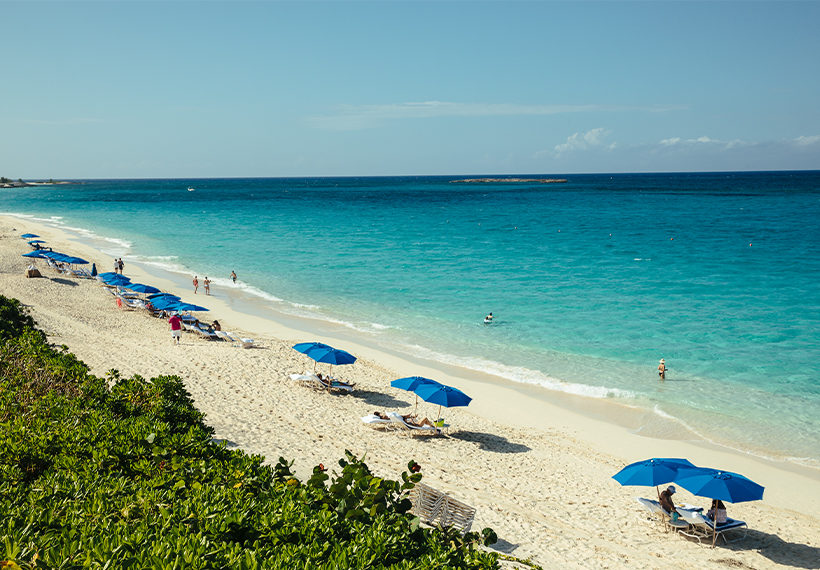
Day 2
Historic sites, cask-strength rum, and serenity at sunset
In the morning, we transfer to The Ocean Club, A Four Seasons Resort, just off the coast of downtown on Paradise Island, which was called Hog Island until a developer renamed it in the 1960s. Turning down a jungly lane, we wend our way to the resort. The entrance looks familiar—Daniel Craig’s James Bond wreaked havoc here in Casino Royale, chasing evildoers (and his own demons). Plus, one of the movie’s gambling scenes was filmed in the elegant lobby bar.
Once we’re settled, we head to town for lunch at longtime standout Café Matisse. The restaurant is in an old colonial building, its interiors festooned with Matisse prints. A peaceful garden lies out back. Despite the name, it’s an Italian joint, but the kitchen has worked some nice local elements into the dishes. We start with a fun fruit gazpacho and a tuna tartare on mashed avocado, then end with a yummy shrimp risotto.
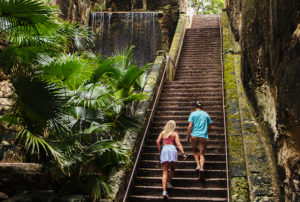
Luisa and Joaquin head back to The Ocean Club to enjoy the beach while I embark on a walkabout through the historic district. My first stop is the Queen’s Staircase, a 102-foot-deep limestone ravine with stairs running up the side. A local guide, Patrick Rolle, notices me looking lost, introduces himself, and explains that the ravine was cut as an escape route for British soldiers in case the French or Spanish sacked Fort Fincastle at the top of the hill. Approximately 600 enslaved people did the work, by hand, over a 16-year period. I look into the cavernous void. It’s uncomfortable to think about what those 600 lives must have been like, but I’m glad to see other travelers walking up to see this colonial remnant and learn its history.
From here, I take a 15-minute walk west along the hill to the Graycliff Hotel & Restaurant, which was built in 1740 and was once home to the pirate John Howard Graysmith. The hotel operates a winery where you can make your own blend (they import juice from Italy and Argentina and age it on site); a cigar operation, where you can learn to roll stogies and pair them with drinks; and a chocolatier. In the mood for something sweet, I hit the latter. The glass case is lined with flavors such as curried coconut tamarind, mint mojito, and white chocolate Key lime. Chocolatier Stafford Forbes and his team offer tours, classes, and pairings with rum. A team member leads me through the production process—they source beans from Jamaica, Trinidad, and Costa Rica, and then do their own roasting, grinding, and concocting. Her favorite creation? The dark chocolate, sea salt, and caramel bon-bon. “It’s peeeerfect,” she says. I have to try one: The top shell is so delicate it’s barely there, and when I hit the middle it brings on a flood of caramel, with just a pinch of salt.
Riding a sugar high, I continue west along the crest of the hill to John Watling’s Distillery, at the Buena Vista Estate, a stately colonial property that, much like The Ocean Club, looks familiar. (In Casino Royale, it served as the fictional Nambutu Embassy in Madagascar.) In real life, it was once the home of Stephen Delancey, who was Chief Justice of the Bahamas in the 1790s. These days, it’s a meticulously restored rum house. Inside, I meet Pepin Argamasilla, a Cuban-Canadian who runs the show here. After a career at Bacardi, he and some relatives broke off and formed their own brand, releasing a lineup of rums in 2013. They distill on other Caribbean islands and age their stuff here, offering various iterations, including one of the first single-barrel rums on the market, a 125-proof powerhouse I’m eager to try.
Pepin is laid-back, but he’s also a serious historian, and anyone who walks in gets a free piña colada and a Bahamian history tour. He shows me a mysterious hole in the backyard that’s too wide to be a well; he believes it was a spiral staircase that led to a now blocked tunnel system that connected 18th-century colonial government buildings in case of invasion. “I spoke to a little old man who passed, and he told me that as a child he used to go down here and show up on the other side of West Hill Street, where his mother worked as a cook,” Pepin tells me. “I’m trying to convince the Ministry of Tourism to look into it. That would be the best tour in the world.”
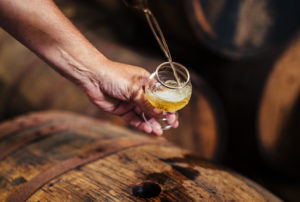
It’s time to head inside and sample the goods. All the expressions are tasty, but the six-year-old single-barrel, bottled at cask strength, is something special. The nose is leathery, with dark chocolate and a bit of grassy funk. On the tongue it offers dark fruit, tobacco, and overcooked pie crust. The high proof doesn’t make it heavy, either; it just gives the flavors more propulsion.
I hop a cab back to The Ocean Club and meet Luisa and Joaquin on the lawn that slopes down to the beach. The air has cooled a touch, and late-day shadows streak the grass. I hear birds I’ve never encountered before and catch glimpses of them as they flit away. I realize, then, that I have nothing to do for a few minutes other than watch Joaquin play with a stick that he finds extremely important and listen to the surf upend itself again and again. As much as I enjoy my normal go-go-go routine of trying to see and do everything wherever I travel, I’m grateful we have this time, as the sun sets, to do nothing. Nothing at all.
After dark, we dine on-property at Jean-Georges Vongerichten’s Dune restaurant, overlooking the beach. I steal some of Joaquin’s mac ’n’ cheese—probably the best I’ve ever had—and sip an elegant gin cucumber martini. Luisa and I start with an ultra-fresh yellowfin tuna tartare in a ginger marinade. For a main, she has lobster with a light curry sauce; I opt for local snapper that looks blackened, but instead of New Orleans flavors it’s infused with island spices. The fresh fish, Joaquin’s smile, and beyond him the stars and the incantations of the surf in the dark make me think that renaming this place Paradise Island wasn’t so much of a stretch.
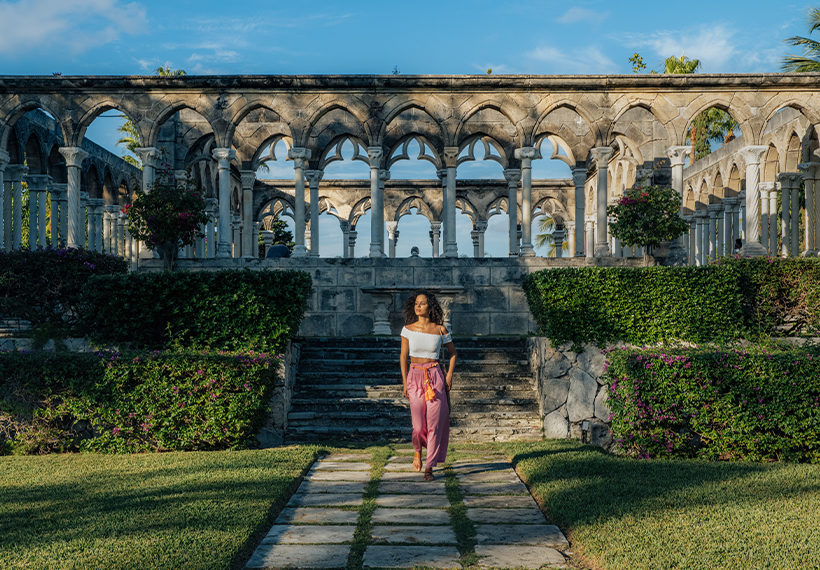
Day 3
Feeding pigs at Ship Channel Cay and listening to the blues in a pirate’s mansion
We’ve been zipping over glassy water at 40 miles per hour for 45 minutes or so when I spot a group of slender islands that seem to levitate on the horizon’s heat mirage. They’re the Exumas, a 120-mile string of 365 islands east of New Providence. My family and I, along with 15 or so other passengers, are being whisked here by Powerboat Adventures, a charter company that takes folks on day trips to a private island at the northern tip of the archipelago.
As we slow down and pull up to a wild beach, small leathery heads start to peek out from the bushes. They’re northern Bahamian rock iguanas, an endangered species that lives only in this section of the country. We hop onto the sand and our guide, Jeriad Taylor, hands us grapes and sticks. “They’ll confuse a finger for a grape, so use the sticks to feed them,” he says. The three-foot lizards are a bit shy, which gives my three-foot son confidence. He tries to offer a grape to one, but another darts in from the side to steal it. He laughs at the drama.
Back on the boat, Taylor cranks up some James Bond–approved tunes, guns the three outboard motors, and carves sharp turns over turquoise water, through a maze of dry limestone islets. They seem uninhabited until we round a bluff and spot a cabin on a sandy channel between two islands. This is Ship Channel Cay, where we’re spending the day. On the agenda: an open bar, plus feeding pigs, sharks, and stingrays.
Taylor lines us up in thigh-deep water and has us hold out carrots until the pigs emerge from the underbrush. The crew tells me that the whole Bahamian-swimming-pig thing started on an island about two hours south of here and became so popular on social media that other tour operations, like this one, got their own pigs. There are seven here, including two 500-pound females, Puffy and Prickle.
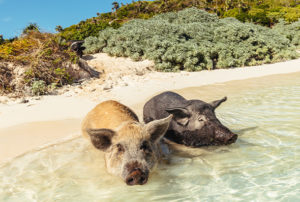
Just down the beach I notice a few dark shapes holding in the current. The sharks—lemon, nurse, and reef sharks from three to seven feet long—have arrived. Clearly they know the drill. We gather on land as crewmember Nardo Knowles takes a rope with a triggerfish on the end and tosses it into the water. A tug-of-war ensues. The shark won’t let go, even as Knowles lifts it out of the water. Its tail thrashes, soaking us all—a reminder of the power moving about within this pretty ecosystem. When the show’s over, the sharks turn their noses into the current and let it carry them off to deeper water.
Next comes a moment I’ve been nervous about. I was once stabbed by a stingray I stepped on while wading in muddy water in the Everglades—one of the most painful experiences of my life. Now I’ll be feeding one—a big one. Knowles has us all kneel in a line on the water’s edge, holding a chunk of fish loosely between our fingers, and wait for the ray to swim by. As it nears, I lower my hand just in time. There’s a crisp slup, and the fish is gone; my fingers, I’m grateful to report, remain.
With the feedings done, the stingray disappears into the channel. The boat’s passengers lie about on the beach or hit the bar. Joaquin chases crabs with another kid, and Luisa and I, drinks in hand, lean into the current sweeping between the two islands. No one wants to leave.
Eventually we do leave—although thankfully our destination isn’t the real world just yet. Back at The Ocean Club, we again enjoy that late daylight, this time while exploring the property’s Versailles Gardens, a fairy-tale setting featuring a cloister crafted in Europe and 19th-century statues such as Cupid and Psyche and The Reclining Venus. The whole romp is the vision of George Huntington Hartford II, an heir to the A&P Tea Company who bought The Ocean Club property around 1960 as a luxe hideaway for business and Hollywood elites.
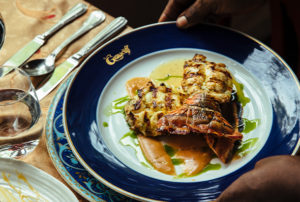
For dinner, I take the family back to the Graycliff. My Nassau grouper comes with a Dijon cream sauce that decadently smothers the freshly charred, sweet fish. “They did that animal justice,” I say. When Luisa takes a bite of her lobster, she falls silent. “Oh, my god—the perfect way to end a perfect day on the water,” she says, quickly adding, “Not sharing.” She does, however, give Joaquin his first ever nibble of lobster. After a studied pause, he wants more.
Afterward, we venture down into the cool basement. This series of rooms was once a prison for the pirate Graysmith’s captives, but today it holds the third-largest private wine collection in the world—some 275,000 bottles. It’s all managed by Sudhir Kangath, who leads us into the brick-floored labyrinth, where I have to crouch to avoid brushing my head against the ceiling. Kangath shows us the oldest registered bottle of wine in the world, a dust-covered German dessert wine from 1727 that’s worth $200,000. I ask if he’s ever misplaced a bottle in this maze. “It happens sometimes, you know?” he admits. “And you’re looking around everywhere. After six months, you find it.”
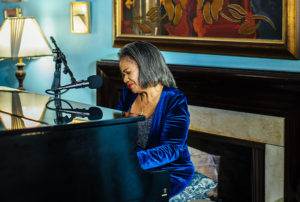
Back upstairs, we’re lured by a soulful voice into a parlor of sorts, with plush sofas, cigar smoke, and pianist Pam Woods putting on a show, singing the blues, show tunes, and the occasional request. Lots of the folks sitting on the couches seem to be regulars. She delivers a boozy version of “I Will Always Love You.” When she notices my wide-eyed son, she sings him a swaying, ethereal “Twinkle, Twinkle, Little Star.” He’s smitten, and so is the rest of the crowd.
As Woods sings, I think of the Nassau I’ve seen in the past three days. It’s a wildly complex Venn diagram, with dozens of circles, some harsh, some beautiful, meeting in the middle—or, like John Cox’s painting, not meeting at all. Here I am, drinking rum made down the street by a Cuban-Canadian while listening to a Bahamian woman of African descent singing American blues songs in a mansion that was previously owned by a pirate. I’m pretty sure there’s nowhere else in the world this could happen.
Hit the Beach: United offers direct service to the Bahamas from Chicago, Denver, Houston, New York/Newark, Washington Dulles, and, most recently, Cleveland.
Next Up: How to Spend Three Perfect Days in the U.S. Virgin Islands
